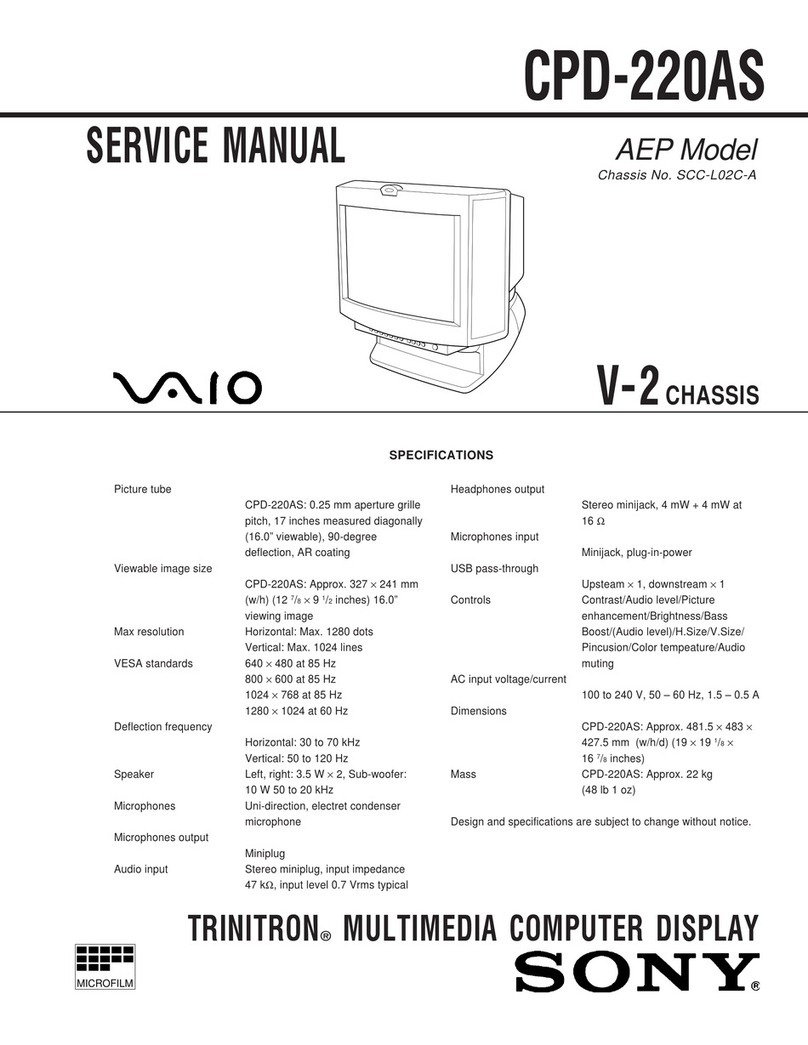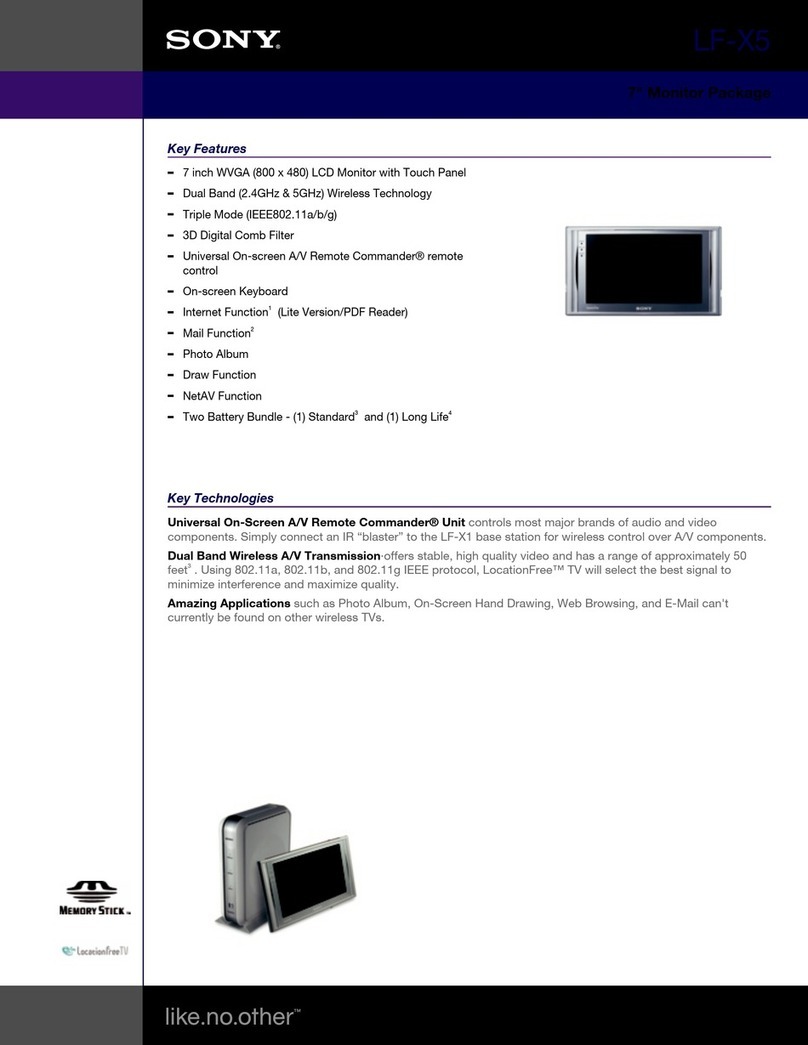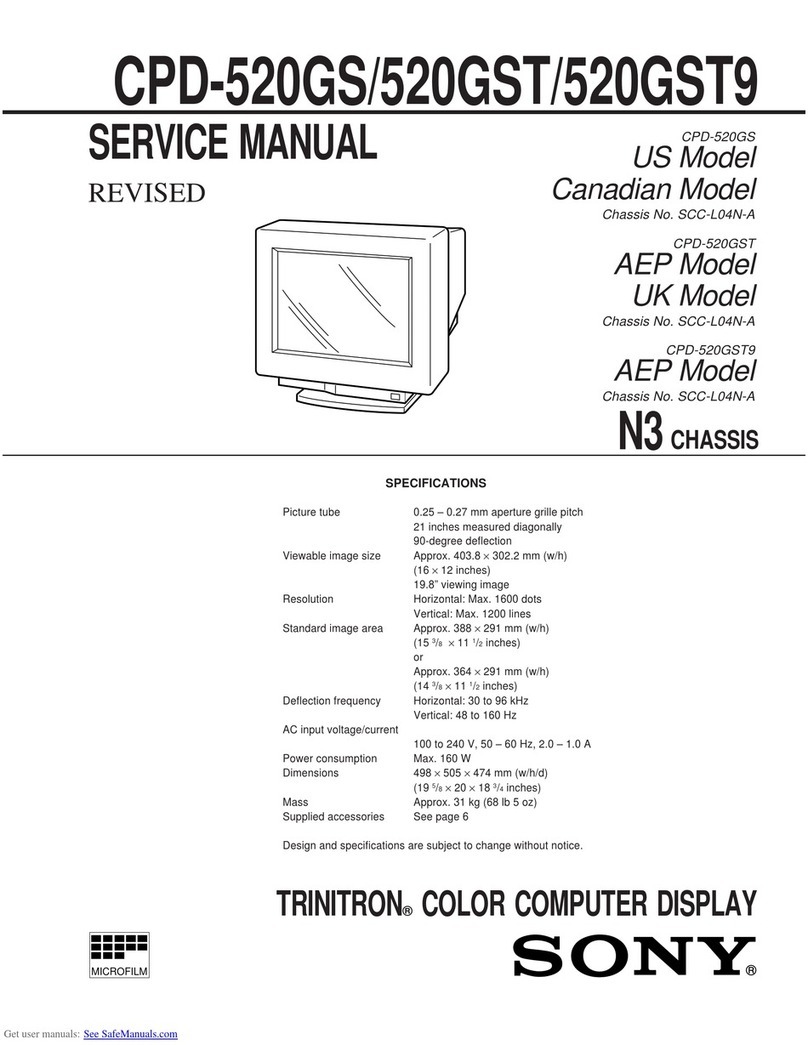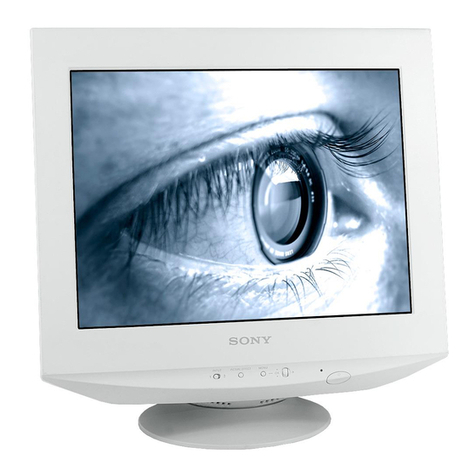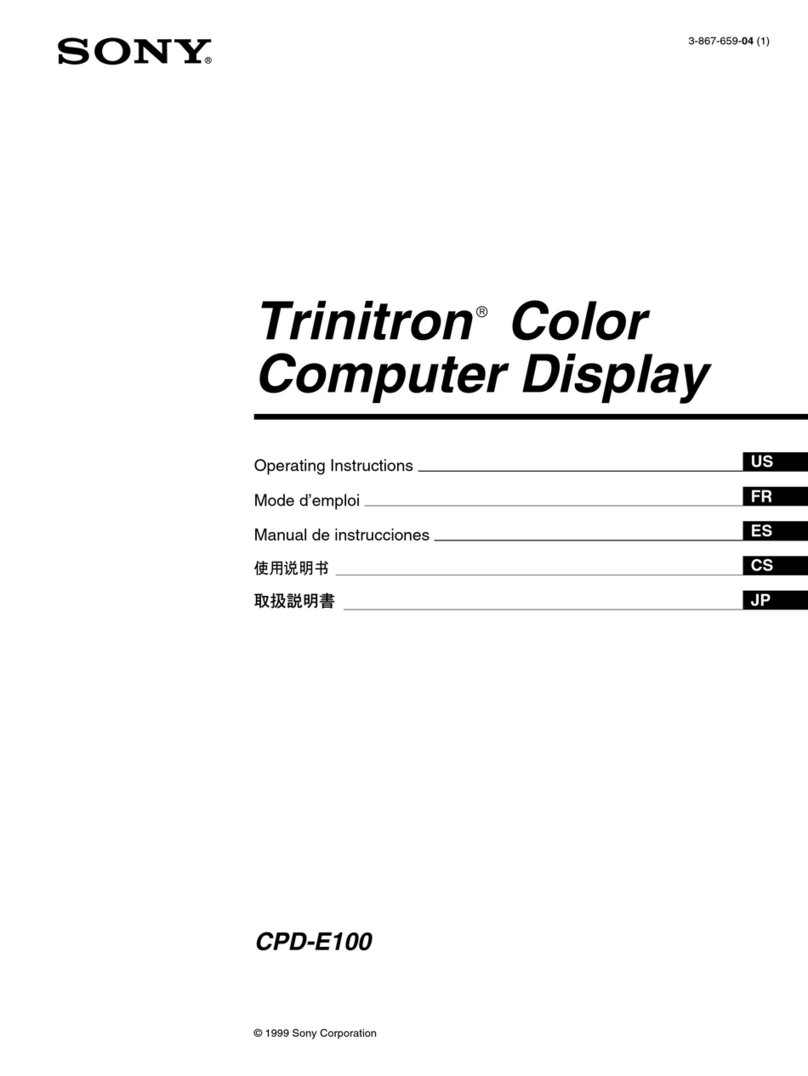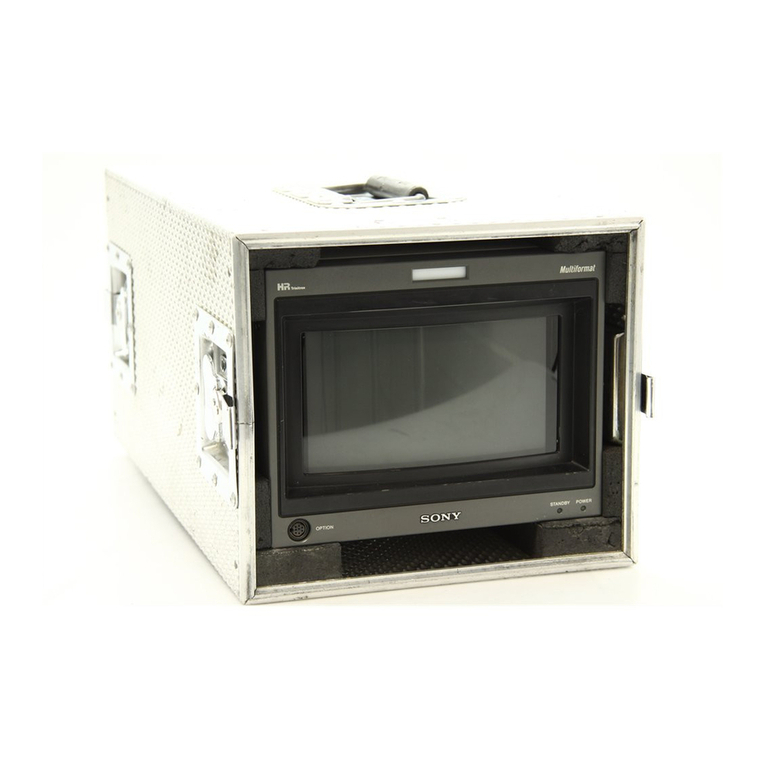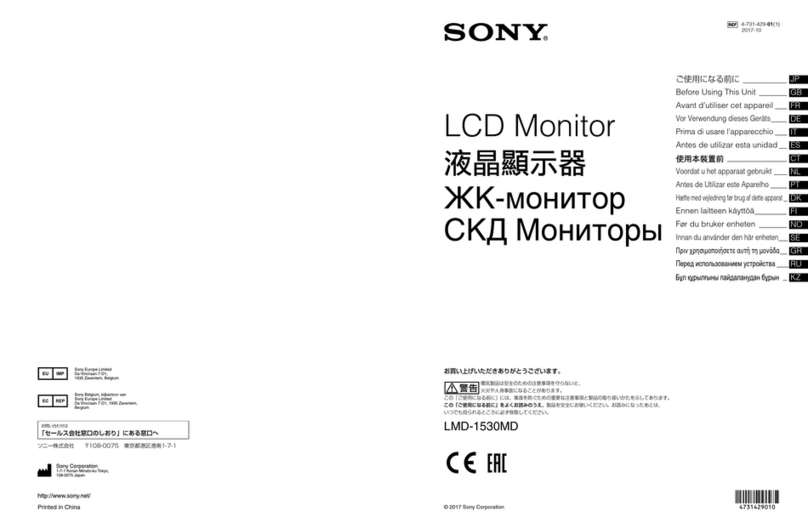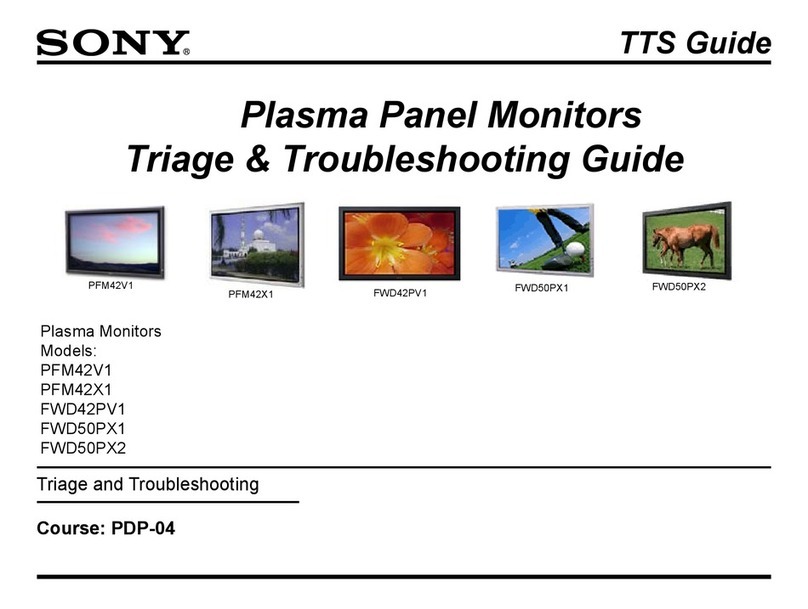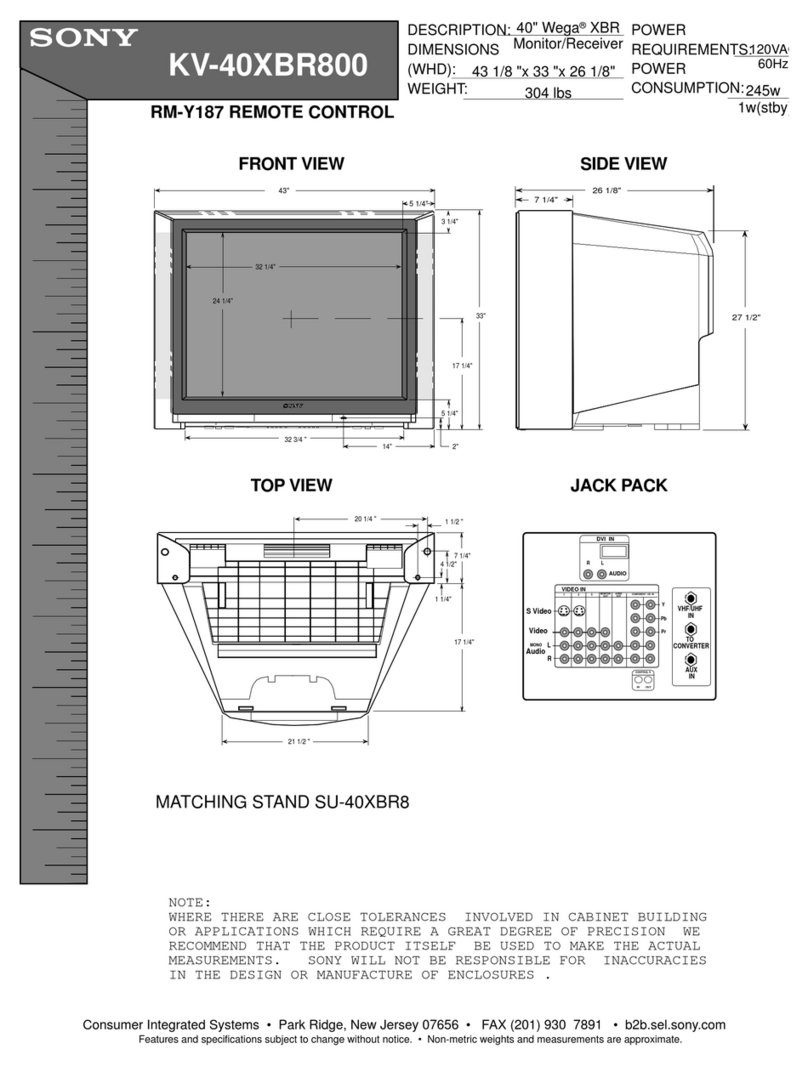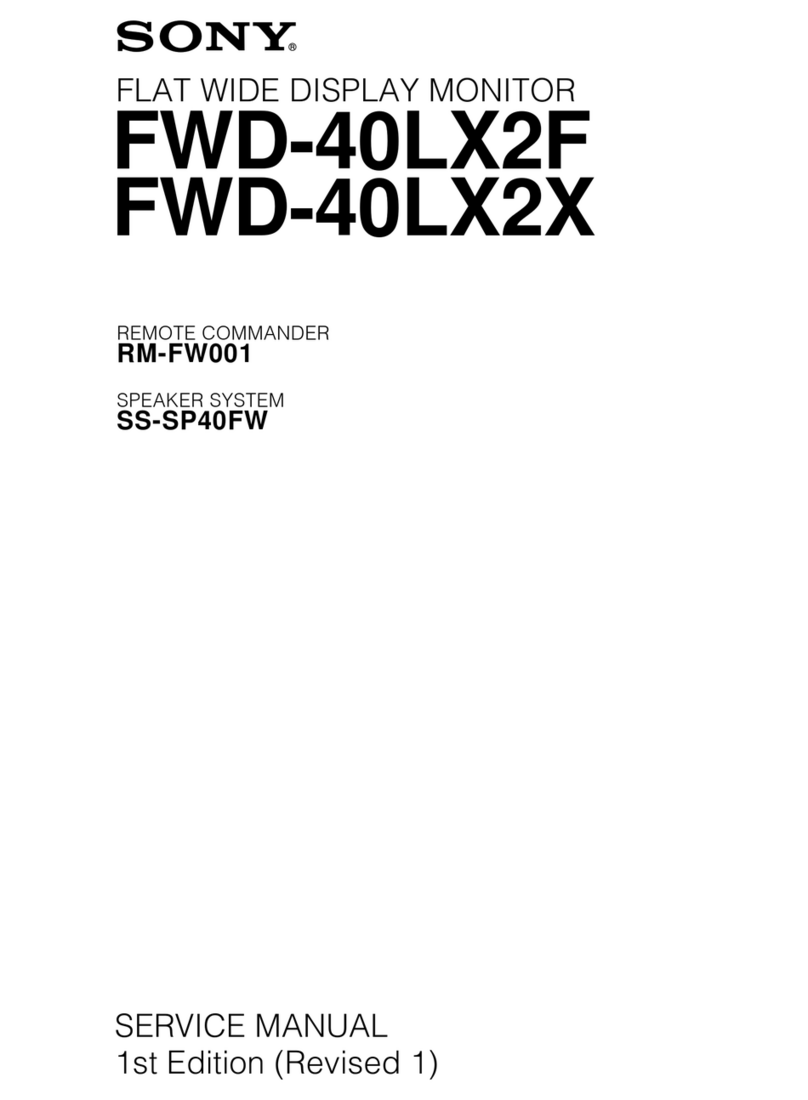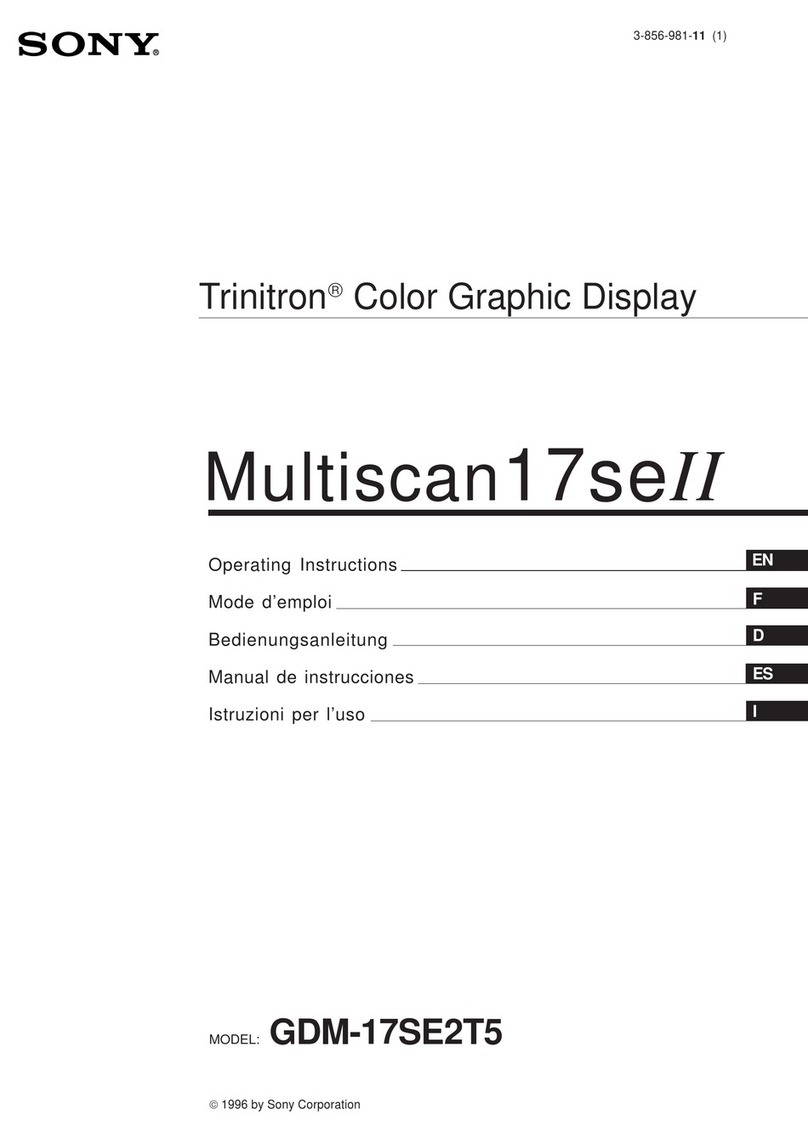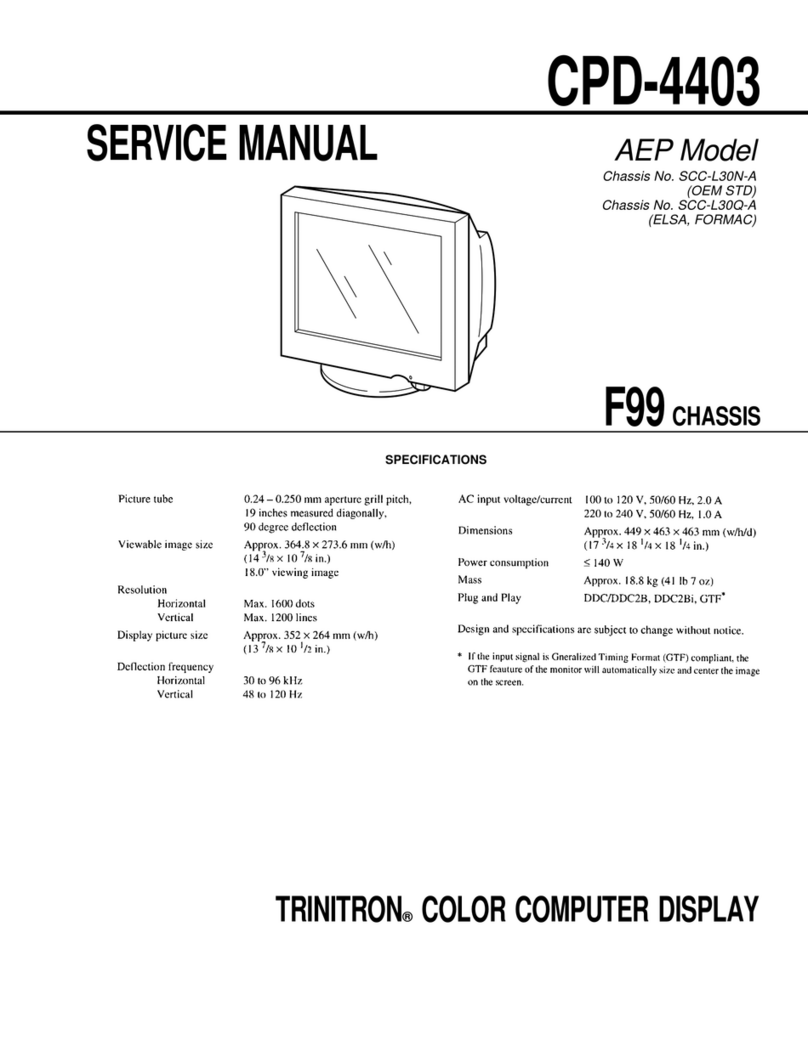6 Product Information Manual Sony Professional LCD Monitors
2
The basic mechanisms of display devices
This section provides you with a general overview
of some common display devices available on the
market today. It describes the basic mechanisms
of a CRT monitor, LCD monitor, and a Plasma
display. Each display device has its unique
mechanism and, therefore, its characteristics are
fundamentally different from others.
Recognizing these differences will lead you on to
an understanding of why LCD technology was
chosen for the LUMA Series of professional
monitors.
The mechanism of a CRT monitor
The Cathode Ray Tube, commonly known by the
acronym CRT, is the most historically used display
system and therefore the first best to understand.
A CRT displays pictures by emitting light from its
phosphors, as a result of stimulating these by
electronic beams. Although the black and white
CRT is the easiest to understand, we will now
consider the mechanism of a color CRT, since
most other display technologies available today
are designed to reproduce color images.
Phosphors emit light
As mentioned above, the CRT monitor
reproduces images by stimulating phosphor
materials.
Inside the CRT tube, there is an inner phosphor
panel situated in front of the CRT’s glass faceplate
(Trinitron’s cylindrical screen). The phosphor
panel appears black, however, a white powdery
substance can be seen by observing it closely.
This powdery substance is the phosphor*
material, a chemical coating applied to the metal
phosphor panel. A unique characteristic of
phosphor material is that it emits light with a
specific color when electrically stimulated.
* In reality, a color CRT uses three types of phosphor
material on its phosphor panel to emit red light, green
light, and blue light, respectively.
Electron Beams
(Red, Green, and Blue)
Aperture Grill
Electron Gun
Phosphor Panel
Figure 2-1. The Trinitron CRT
R
The basic mechanisms of display devices - CRT, LCD, and Plasma technology

